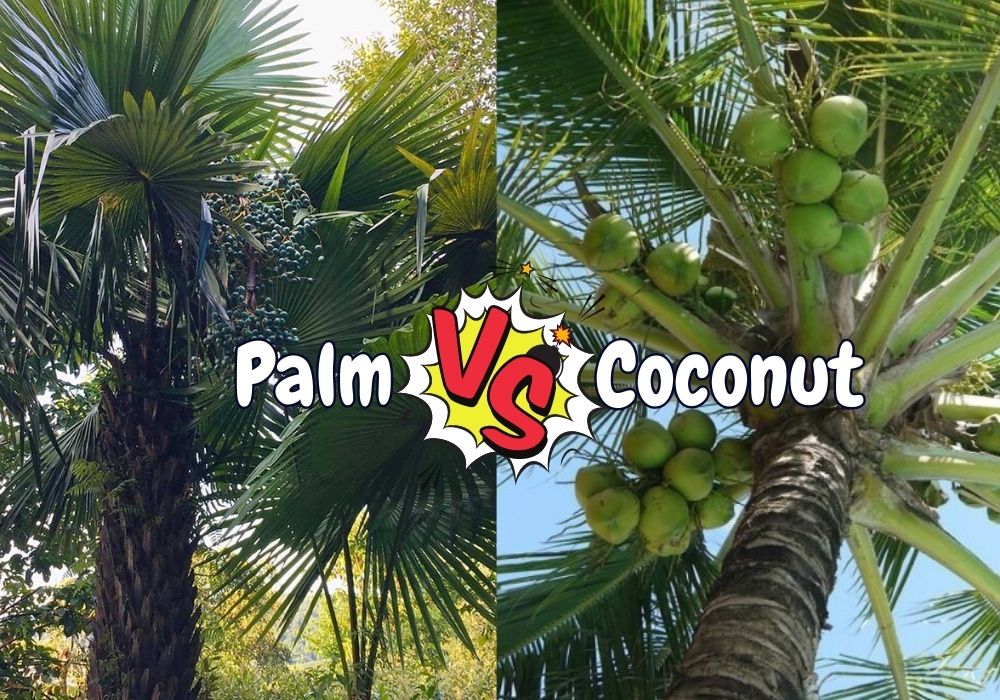Palm and coconut trees are two of the most iconic and recognizable trees in tropical regions worldwide. While both belong to the Arecaceae family, their appearance, habitat, and economic importance differ. Understanding the differences between palm trees and coconut trees can help you identify these trees in the wild and appreciate their unique characteristics. This article will explore the key difference between palm tree and coconut tree in detail.
Contents [hide]
- Palm Tree vs Coconut Tree: Overview
- Palm Tree vs Coconut Tree: Taxonomy
- Palm Tree vs Coconut Tree: Trunk Appearance
- Palm Tree vs Coconut Tree: Fruit
- Palm Tree vs Coconut Tree: Shape and Colour of the Leaf
- Coconut Tree vs Palm Tree: Height
- Palm Tree vs Coconut Tree: Growth Habits
- Palm Tree vs Coconut Tree: Cultivation
- Economic Importance
- FAQs
Palm Tree vs Coconut Tree: Overview
Coconut trees are a type of palm tree that produce large, spherical coconuts while other palm trees may produce small fruit like dates, bactris gasipaes, coquito nuts. Coconut tree have long, feather-shaped leaves and a thicker trunk base compared to other palm trees.
Coconut trees and palm trees are distinguishable from other types of palms due to their tall, slender trunk with a crown of large, feathery fronds at the top. Palm trees, on the other hand, have a thicker trunk with a cluster of fan-shaped leaves at the top.
| Feature | Coconut Tree | Palm Tree |
| Trunk | Tall and slender, up to 30 meters | Thicker and often bulging at the base |
| Leaves | Long and feathery, light green | Wider and fan-shaped, dark green |
| Bark | Smooth and gray | Rougher and varying shades of brown/gray |
| Fruit | Large, round, fibrous drupe | Variety of fruits, including dates, coconuts, and acai berries |
| Growth Habit | Straight and vertical; can grow curved or leaning | Straight and vertical |
| Habitat | Coastal tropical regions | Wide range of climates and soil types |
Palm Tree vs Coconut Tree: Taxonomy
Coconut tree is a type of palm tree. Palm trees belong to the family Arecaceae, and the coconut tree (Cocos nucifera) is one of the many species within this family.
However, they differ in terms of their specific taxonomy.
Coconut Tree (Cocos nucifera):
- Kingdom: Plantae
- Division: Magnoliophyta
- Class: Liliopsida
- Order: Arecales
- Family: Arecaceae
- Genus: Cocos
- Species: Nucifera
Other Palm Trees (Various species within Arecaceae):
- Kingdom: Plantae
- Division: Magnoliophyta
- Class: Liliopsida
- Order: Arecales
- Family: Arecaceae
- Different Genus and Species depending on the specific palm tree (like:Date Palm (Phoenix dactylifera); Queen Palm (Syagrus romanzoffiana); Canary Island Date Palm (Phoenix canariensis) and Bismarck Palm (Bismarckia nobilis))
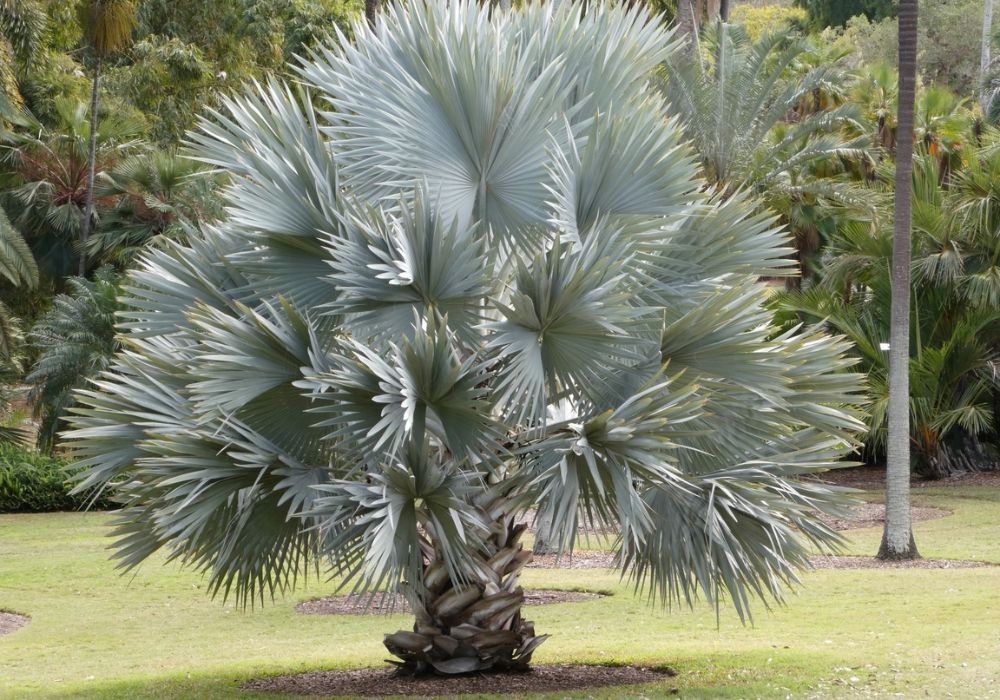
Palm Tree vs Coconut Tree: Trunk Appearance
Palm tree vs coconut tree difference in trunk appearance quite clearly. Palm trees typically have smooth, cylindrical trunks with rings or scars. Coconut trees, on the other hand, have rough, fibrous trunks with wider bases and buttresses. These differences reflect their adaptations to different environments and growth habits.
Some palm species often have trunks covered with old leaf bases and thorny petioles, giving them a rough texture. The trunk color of coconut trees can range from light gray to brown, often with a smoother appearance due to fewer old leaf bases. These differences in trunk appearance reflect the adaptation of each tree to its environment and growth habits.
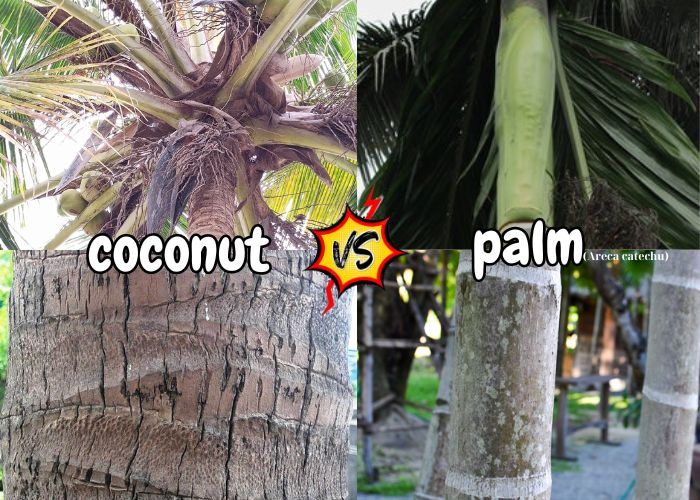
Palm Tree vs Coconut Tree: Fruit
The presence of fruit stands out as one of the most noticeable distinctions between coconut trees and palm trees. The fruit of the coconut tree is the coconut itself, which is significant, green, and spherical with a fibrous husk, while other palm trees produce different types of fruits such as dates, coquito nuts, or palm fruits, which can vary in size, shape, and colour.
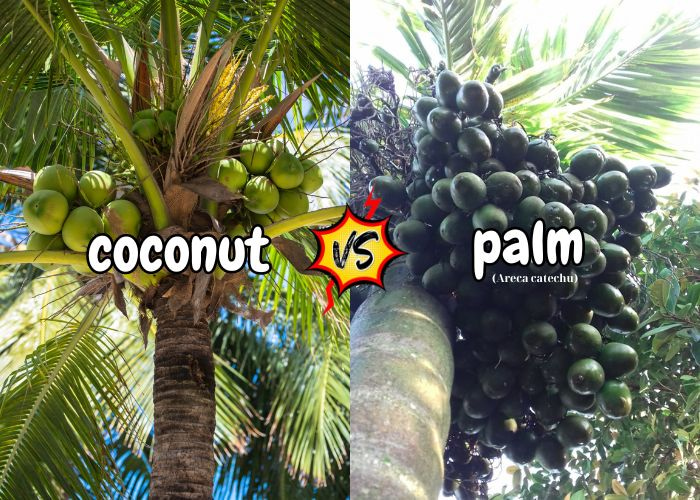
Palm Tree vs Coconut Tree: Shape and Colour of the Leaf
Coconut trees have long leaves that can reach up to 20 feet (6 meters) in length, while other palm trees typically have fan-shaped or feather-shaped leaves that vary in size and appearance depending on the species.
The leaves of coconut trees are bright green, while the leaf colour of other palm trees can vary. Some palm trees have green leaves, while others may have silver-grey, bluish-green, or even variegated foliage, depending on the species.
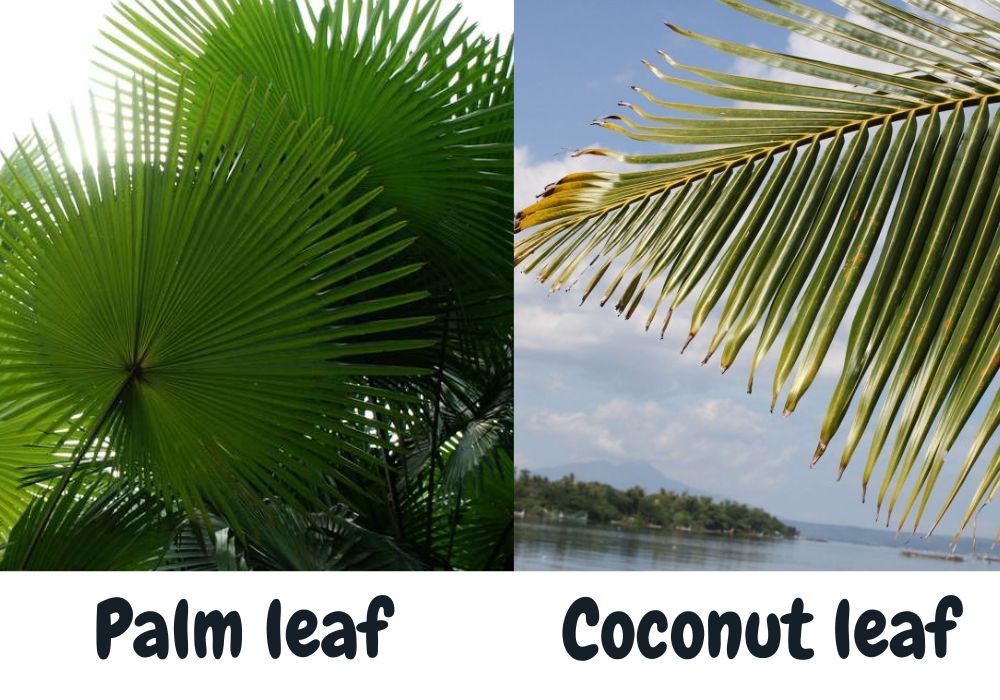
Coconut Tree vs Palm Tree: Height
Coconut trees are typically taller than most palm trees. Full-size coconut trees can reach over 100 feet, while dwarf varieties are shorter. Other palm trees generally range from 30 to 45 feet, but some can grow as tall as 200 feet.
It’s important to note that the height of both coconut trees and other palm trees can be influenced by factors such as soil quality, climate, and specific variety.
Palm Tree vs Coconut Tree: Growth Habits
Coconut trees are typically found in tropical coastal areas. They are well adapted to grow in sandy soil close to the sea, thriving in a humid and warm climate.
In contrast, other palm trees have a broader distribution. They can be found in various habitats worldwide, including deserts, forests, and even temperate regions, showcasing a more comprehensive range of adaptability.
Palm Tree vs Coconut Tree: Cultivation
Coconut trees are widely cultivated for their versatile uses, including the production of edible fruit, coconut water, and coconut oil, making them an essential crop in tropical regions.
At the same time, other palm trees are also cultivated for various purposes, such as landscaping, ornamental use, and producing fruits, nuts, and fibres, depending on the specific species and their unique characteristics.
Economic Importance
Coconut trees hold significant economic importance due to their wide range of products, including coconut meat, coconut oil, coconut water, and various coconut-based products (coconut bowls, coconut cups,…), which contribute to industries such as agriculture, food and beverage, cosmetics, and even biofuel production.
At the same time, other palm trees also have economic significance, with their fruits, nuts, fibres, and timber being utilized in industries such as horticulture, construction, furniture, and the production of palm oil and dates, among others.
FAQs
Are palm trees and coconut trees the same?
No, palm trees and coconut trees are not the same. While it’s easy to confuse them, here’s the breakdown:
- Coconut tree is a type of palm tree.
- There are many other types of palm trees that don’t produce coconuts.
So, all coconut trees are palm trees, but not all palm trees are coconut trees.
Do coconuts grow on palm trees?
Yes, coconuts do grow on palm trees but not all palm trees produce coconuts. Coconuts only grow on coconut tree. The coconut tree is a specific type of palm tree.
The above article is the information about the difference between palm tree and coconut tree. If you have any futher questions or or want to quote the price of coconut products, don’t hesitate to send us an email at info@thanhcongcraft.com or leave us a message at WhatsApp: +84967485411. Hope to serve you soon! Best regard!


